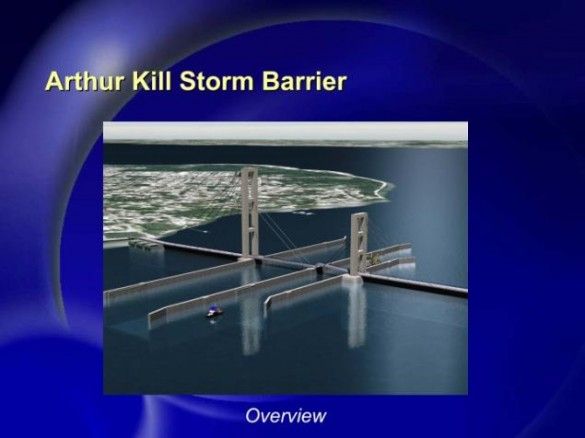Massive Seascape Projects In City’s Future?

It would cost upwards of $10 billion and take nearly a decade to build, but politicians, engineers, and average citizens are starting to dream big when it comes to protecting New York City’s coastline from another storm surge disaster.
A New York Daily News report is citing growing interest in plans to invest in a massive billion dollar seascape project meant to push back the types of surging sea swells that caused $42 billion dollars in damage after Hurricane Sandy struck.
The types of projects dreamed up include a 5-mile-long and 80-foot-high rock barrier reaching from Breezy Point, Queens to Sandy Hook, N.J., a massive 1,700-foot wall stretching across the Arthur Kill and a huge structure in the shadow of the Verrazano Bridge that features two identical 640-foot-high gates.
In recent years, support for ambitions architectural super-projects such as these would have met stiff opposition from politicians and taxpayers alike. More than likely, they would be unwilling to invest the vast resources required to prevent a scenario they could scarcely envision.
The reality of Sandy is changing these attitudes.
Despite the enormous cost and ingenuity required to erect a seascape structure, they aren’t long term solutions, as oceans will continue to rise ever higher in the coming centuries. Still, they have proven effective in countries like England and the Netherlands, where massive seawalls have prevented billions in flood damage since their construction.
While enthusiasm is running high right now for bold action, time will prove to be the number one obstacle in seeing such projects to completion. As New York recovers from Sandy’s destruction and is lucky enough to spared of another major storm in the coming years, people’s desire for a long term solution will wane.
The Daily News quoted engineer Larry Murphy who recalled the devastation caused by the 1938 “killer cane” which killed 700 New Yorkers and left 63,000 homeless.
He says, “There’s a tremendous amount of damage, but maybe it wasn’t bad enough. Look at the ’38 hurricane. If that hit today, there would be no question about building that barrier.”



